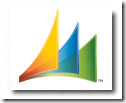Microsoft Dynamics AX 2009 has been released and with it comes a new Enterprise Portal
 Microsoft Dynamics AX 2009 is now officially released to the public. The official press release is located here. It has taken two years and a lot of hard from work a very dedicated team of individuals across the world. It comes full of many new and exciting features that will hopefully make AX 2009 resonate through the market. But this blog is not about AX in its entirety. It is about the new Enterprise Portal framework in AX 2009, which we are super excited about.
Microsoft Dynamics AX 2009 is now officially released to the public. The official press release is located here. It has taken two years and a lot of hard from work a very dedicated team of individuals across the world. It comes full of many new and exciting features that will hopefully make AX 2009 resonate through the market. But this blog is not about AX in its entirety. It is about the new Enterprise Portal framework in AX 2009, which we are super excited about.
This blog will discuss the fundamental changes that we made to the Enterprise Portal framework (in short EP) for AX 2009. When I say we I mean the EP framework team who worked on it for the last 2 years. A lot of work from a lot people from developers, testers, and program managers to technical writers and UX designers has gone into EP 2009. My name is Jeppe and I am developer on the EP team. I and the rest of the team will be writing about the many different aspects of EP 2009 mainly focusing on the new EP 2009 framework and how to develop content on the new framework as well as the new concept of Role Centers that was introduced with AX 2009.
During the planning phase for the AX 2009 release (which was known internally by the not very innovative name of 5.0) the EP team decided to continue on the path that was set out for EP in AX 4.0, which was to make EP benefit from all the great technologies built by other teams at Microsoft. In the 4.0 release EP was moved into Sharepoint (MOSS and WSS) and it started to leverage the goodness of Sharepoint and other parts of the Microsoft technology stack. That makes EP 4.0 a strong value proposition since it allows you to surface your business data in Sharepoint by developing metadata driven AX Web Forms using the MorphX development environment in AX.
So for the next release of AX we wanted to expand the use of Microsoft technologies to build an even more compelling portal for AX. An obvious choice was to embrace ASP.NET as our foundation for EP since that is the de-facto Microsoft standard for web development. ASP.NET comes with a rich framework for building compelling web solutions as well as a huge community following that has extended ASP.NET in countless ways. So by moving to ASP.NET EP would be able to benefit from all the work done by Microsoft and the community as well as the continuing innovation made by the ASP.NET team like ASP.NET Ajax Extensions. In addition we wanted to integrate with other Microsoft products like Microsoft SQL Server Reporting Services and Microsoft SQL Server Analysis Server and surface these through the Role Centers that are based on the new EP framework. Role Centers provide a role based overview of the business by surfacing key business data from AX directly as well as from SSRS and SSAS.
While moving away from the X++ web framework used for EP 4.0 to a new ASP.NET based framework the biggest challenge was to ensure that the features, X++ programming model and scenarios supported in EP 4.0 were not lost. They had to be carried forward while enabling support for building new features using the new framework. For the new framework some of the main goals were to enable easy data binding to AX data using standard ASP.NET data binding mechanism, use the rich AX metadata for data formatting, validation, lookups etc., plug into the AX security system, integrate the managed ASP.NET specific UI code with a familiar X++ programming model in AX, and much much more. In short the new framework should bring together all the richness of AX and ASP.NET in a framework that would facilitate the building of an awesome new Enterprise Portal for AX 2009.
So the purpose of this blog is to describe all of the new out of the box features of EP 2009 and how to enable compelling business scenarios using the EP 2009 framework. There is a lot to discuss from topics like architecture to deployment, administration, development, performance, security etc. to details like how to insert a row in a grid, how to customize a lookup and tons of other cool features in Microsoft Dynamics AX 2009 Enterprise Portal.
So now that the introduction is over the next step is to move onto the details and hopefully at some point get to some actual coding!
Comments
- Anonymous
October 27, 2008
Microsoft Dynamics AX 2009 is now officially released to the public. The official press release is located